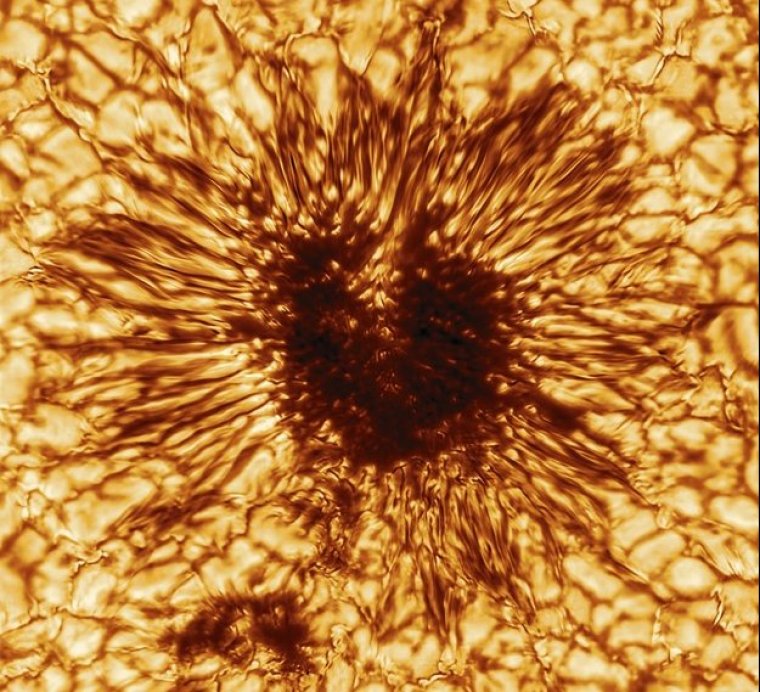| News / Space News |
Inouye Solar Telescope releases its first image of a sunspot
The world's largest solar observatory, the U.S. National Science Foundation's Daniel K. Inouye Solar Telescope, has released its first image of a sunspot. Although the telescope is still in the final phases of completion, the image is an indication of how the telescope's advanced optics and 4-meter primary mirror will give scientists the best view of the sun from Earth throughout the next solar cycle.

The sunspot image taken by NSF's Inouye Solar Telescope's Wave Front Correction context viewer. Photo: NSO/AURA/NSF
The sunspot was captured by the Inouye Solar Telescope on January 28, 2020 and is not the same sunspot currently visible to the naked eye.
"The sunspot image achieves a spatial resolution about 2.5 times higher than ever previously achieved, showing magnetic structures as small as 20 kilometers on the surface of the sun," said Thomas Rimmele, the associate director at NSF's National Solar Observatory, the organization responsible for building and operating the Inouye Solar Telescope.
The image reveals striking details of the sunspot's structure as seen at the sun's surface. The streaky appearance of hot and cool gas spidering out from the darker center is the result of sculpting by a convergence of intense magnetic fields and hot gases boiling up from below.
The concentration of magnetic fields in this dark region suppresses heat within the sun from reaching the surface. Although the dark area of the sunspot is cooler than the surrounding area, it is still extremely hot, with a temperature of more than 7,500 degrees Fahrenheit.
The sunspot image, measuring about 10,000 miles across, is just a tiny part of the sun. However, the sunspot is large enough that Earth could comfortably fit inside. (National Science Foundation)
YOU MAY ALSO LIKE





